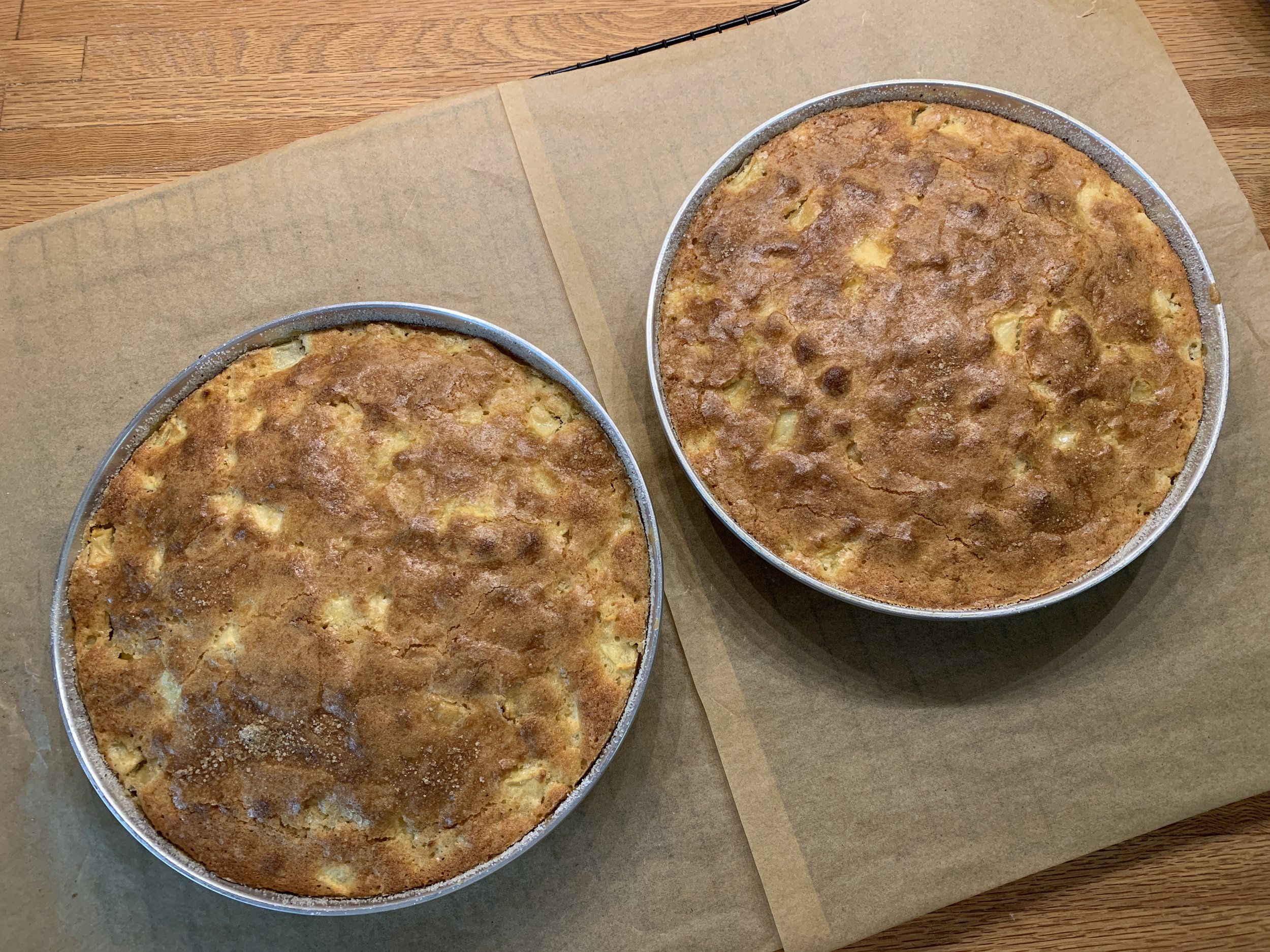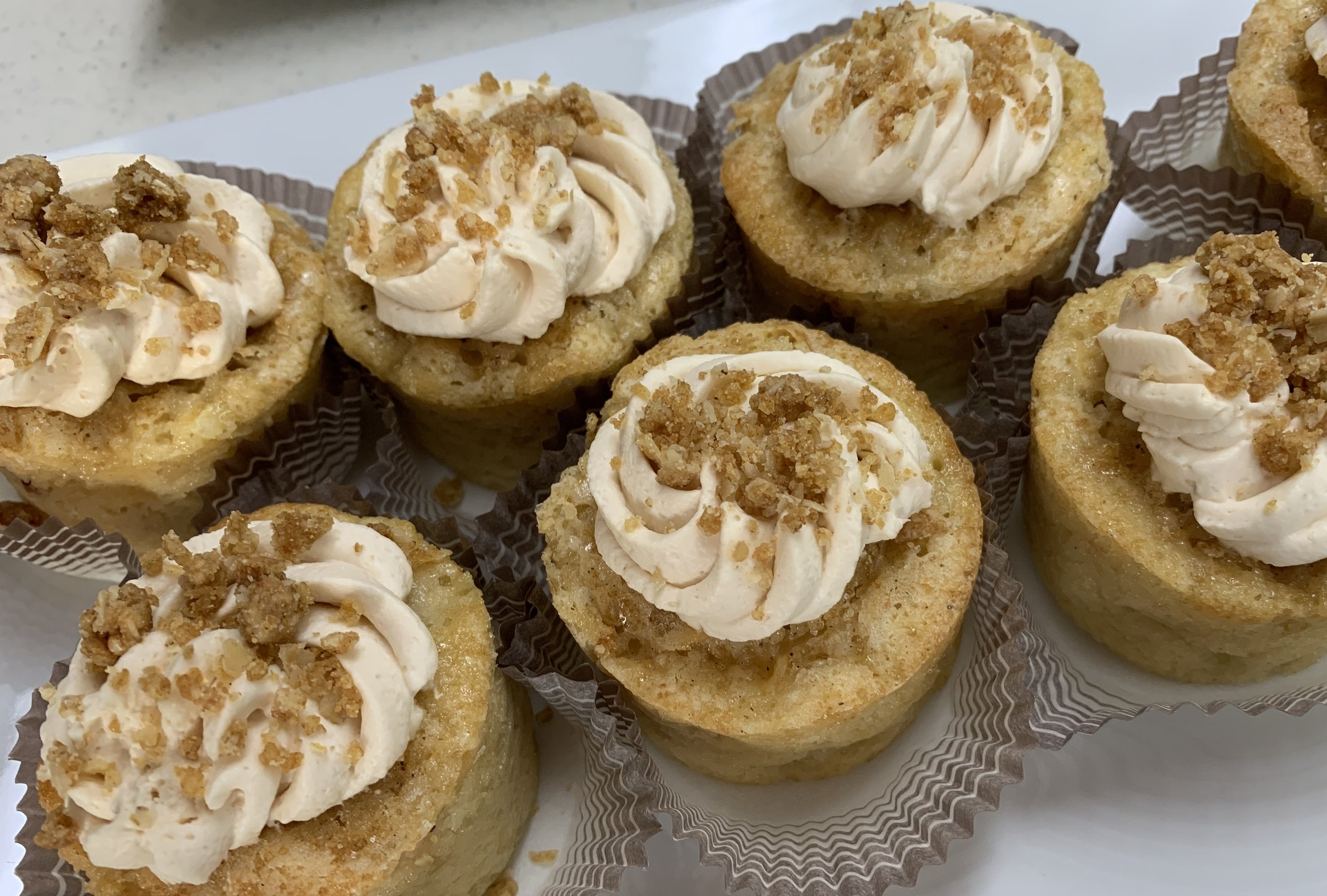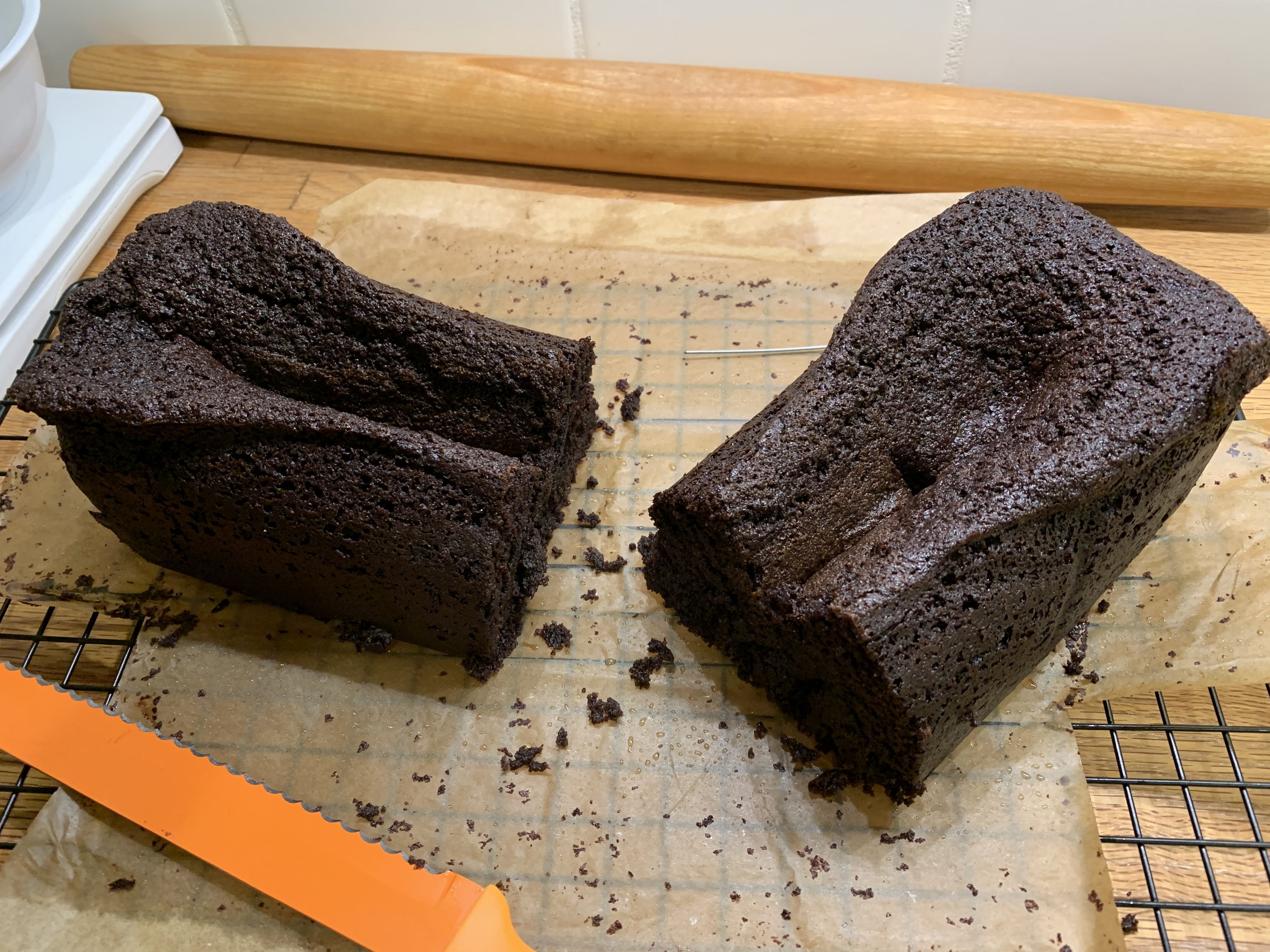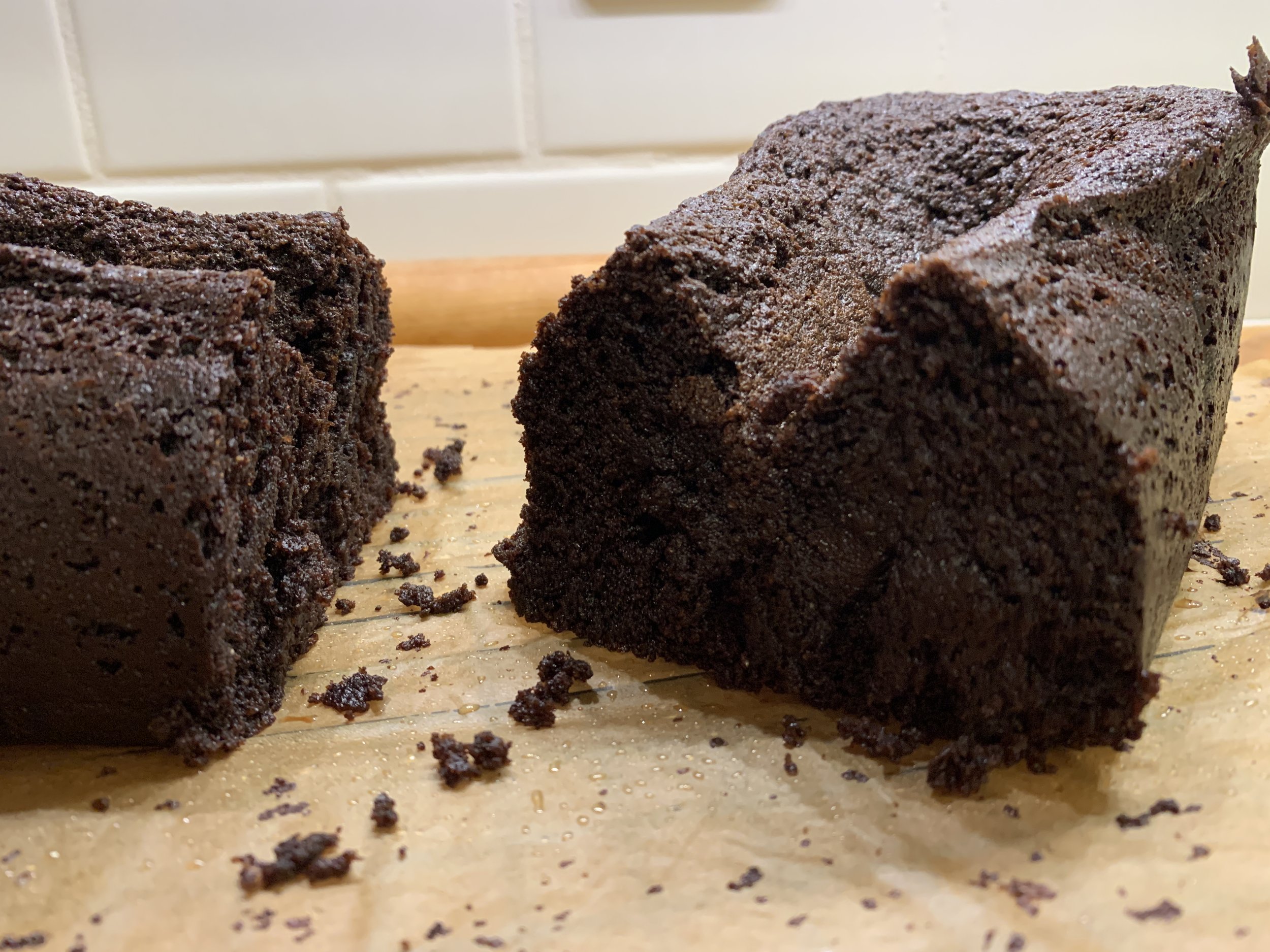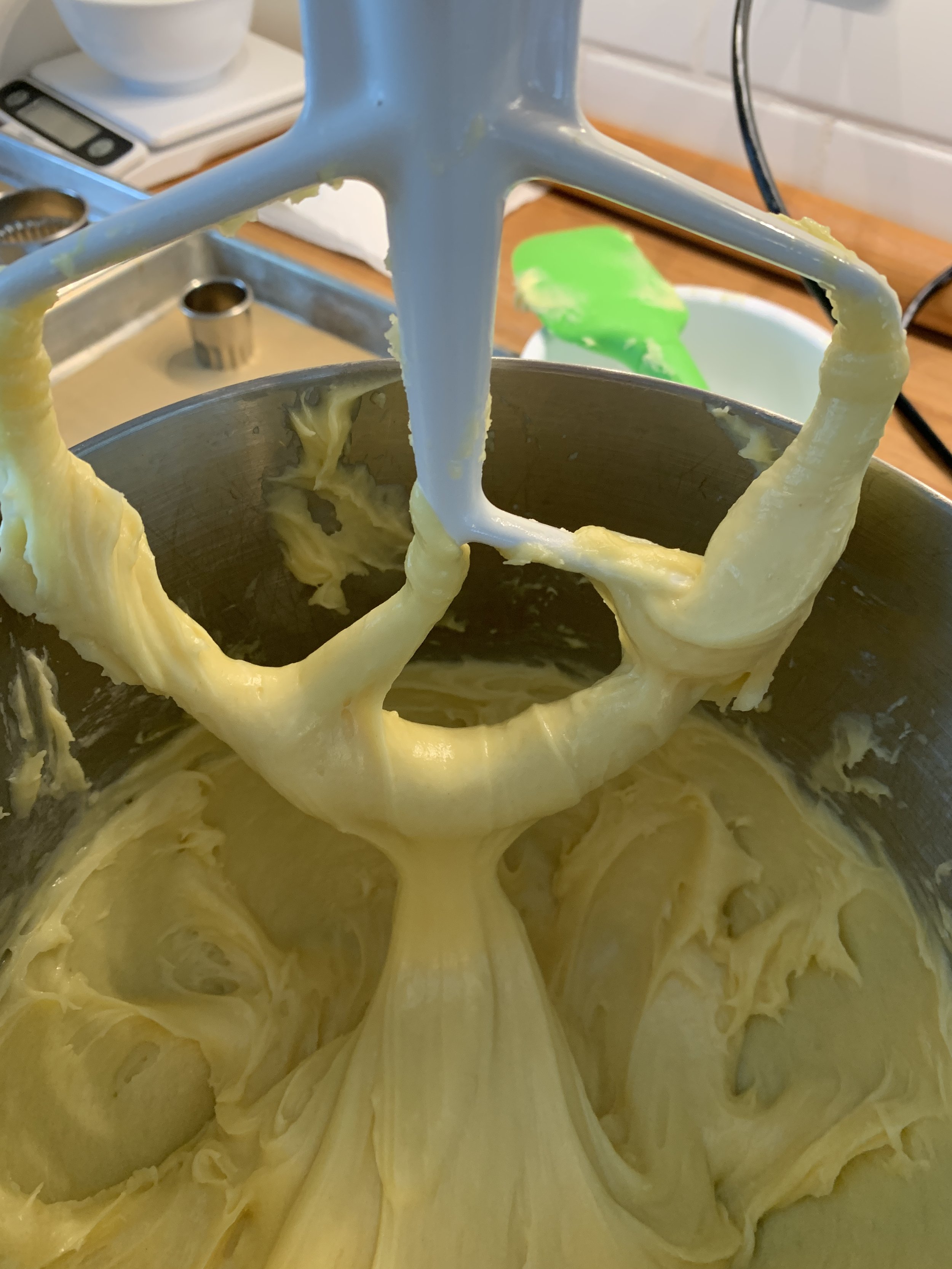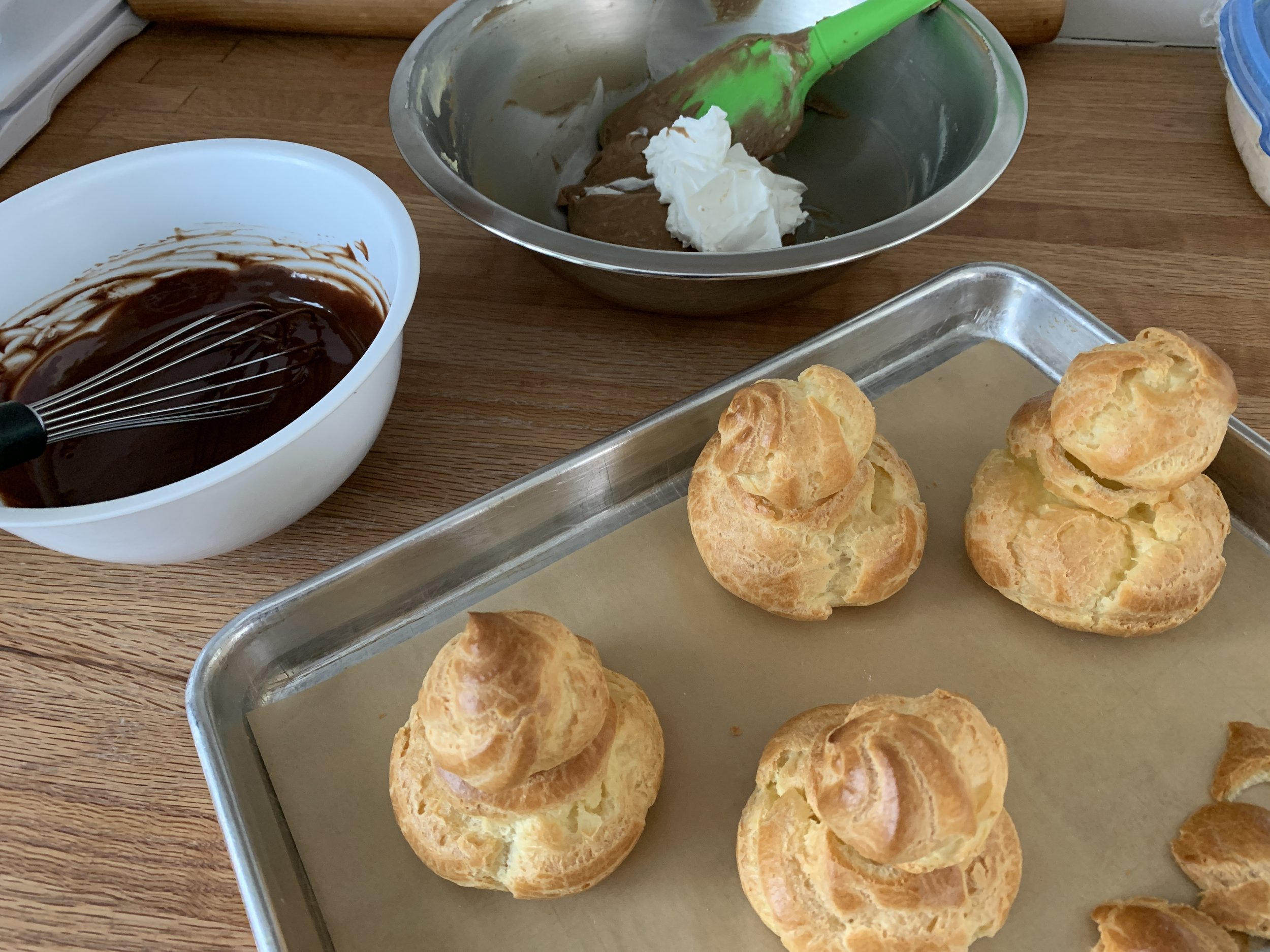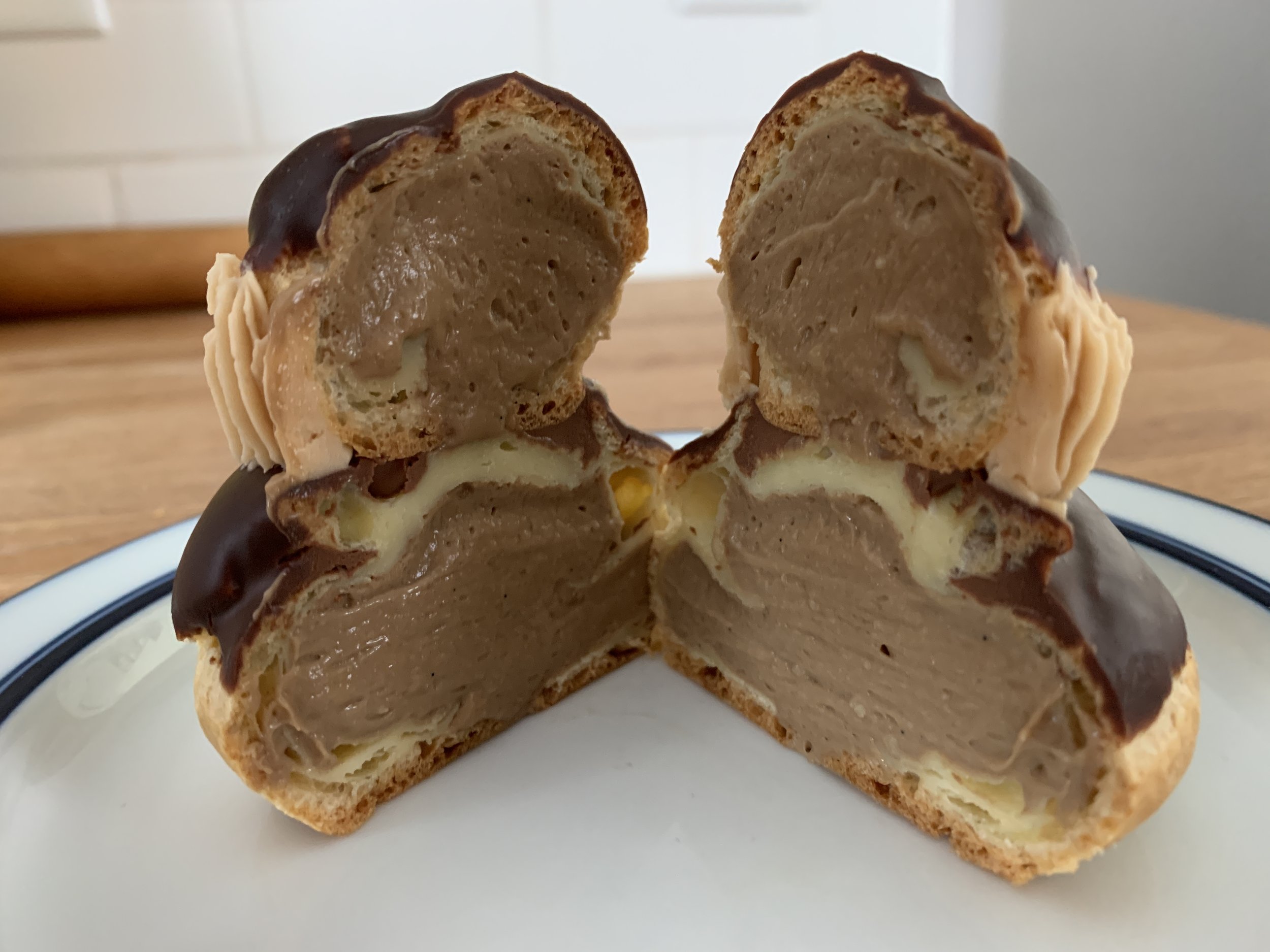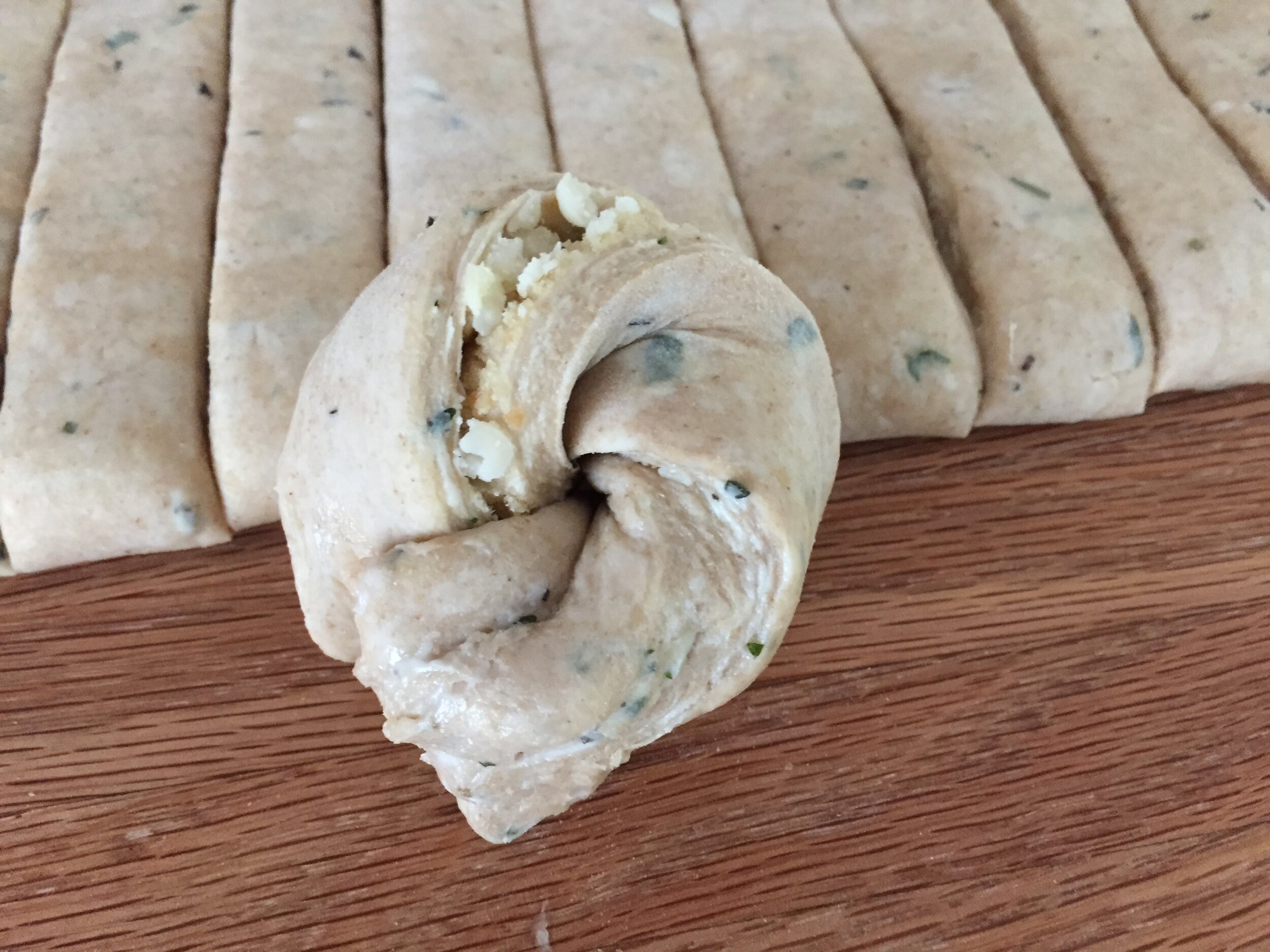Have a cheery, peaceful and happy holiday season!
/Holiday shortbread all boxed up
It’s been a busy time these past few weeks and blogging has taken a back seat. BUT . . . . I’ve tried a couple of new cakes from Aleksandra Crapanzano’s book “Gâteau” which I hope to share with you in the upcoming weeks.
One is a classic French apple rum-scented cake which I’ve made several times now. The first time around was for a demo I did back in October at a nearby assisted living facility during which I made two 6” smaller cakes. The time frame required a shorter bake than for a full 9” cake and it worked out just fine. The residents LOVED it!
six inch french apple cakes
I’ve also made both standard “muffin” sizes (seen below at another assisted living gig) and petite teacake versions topped with whipped caramel mascarpone and oat crumble. Yum!
The other day I made a chocolate, spelt, crème frâiche, coffee enhanced loaf that I will definitely try again. The recipe calls for a 9”x5” loaf pan, but I used my mom’s Mirro pan that’s longer and more narrow than a standard loaf. I’ve done that a number of times with other cake recipes that call for a standard loaf but this time the batter was WAY too much for the pan, spilling over the ends like lava. I ended up scooping some of the batter out early on in the bake and then let it finish. Boy did I have my doubts.
Not a pretty picture - sunken right down the middle like a trough. All puckered up! Just goes to show ya that things don’t always end up as you might hope.
But wouldn’t you know it - it’s delicious! Deep cocoa flavor, moist crumb with just the right level of coffee flavor.
I’ll let you know how the Christmas dessert I hope to serve comes out. Slices and/or chunks of this cake with a vanilla/orange scented ricotta custard, some chocolate ganache and something crunchy to set it off. Maybe a nutty crumble or chopped candied hazelnuts or walnuts. Mmmmmm . . . sounds good!
Cheers and good wishes to all! Catch you later.
My vermont memories window display (No white christmas here!)


